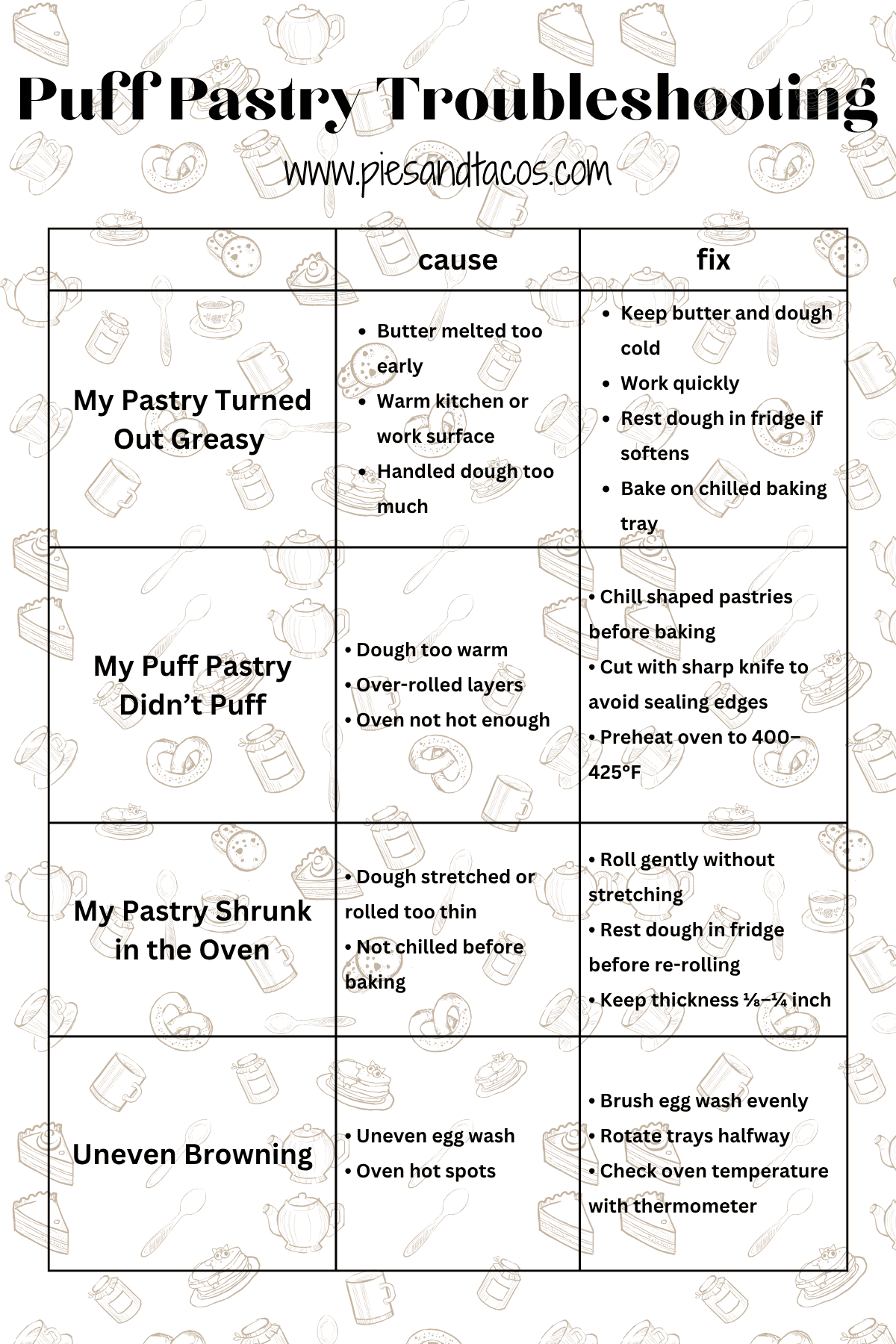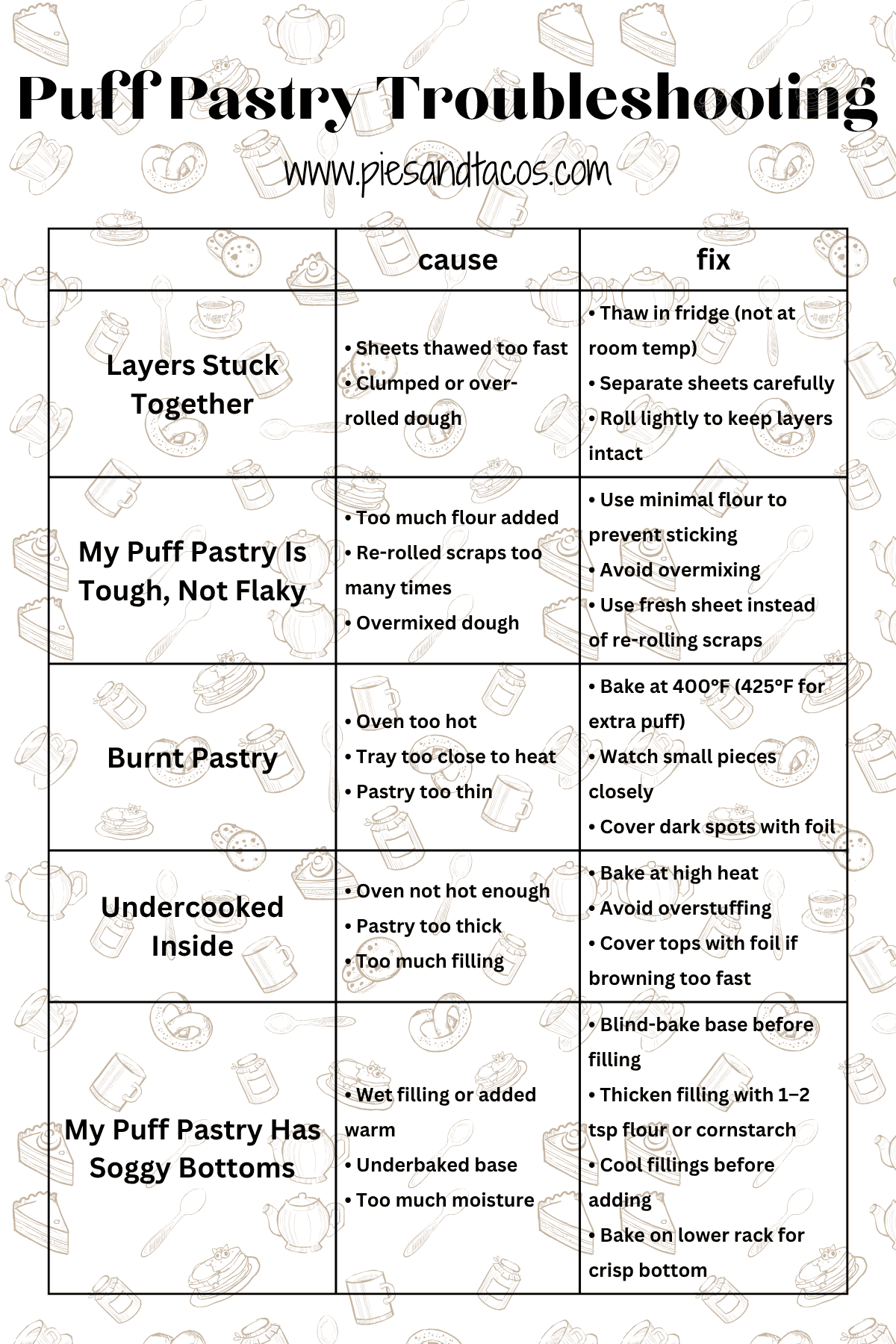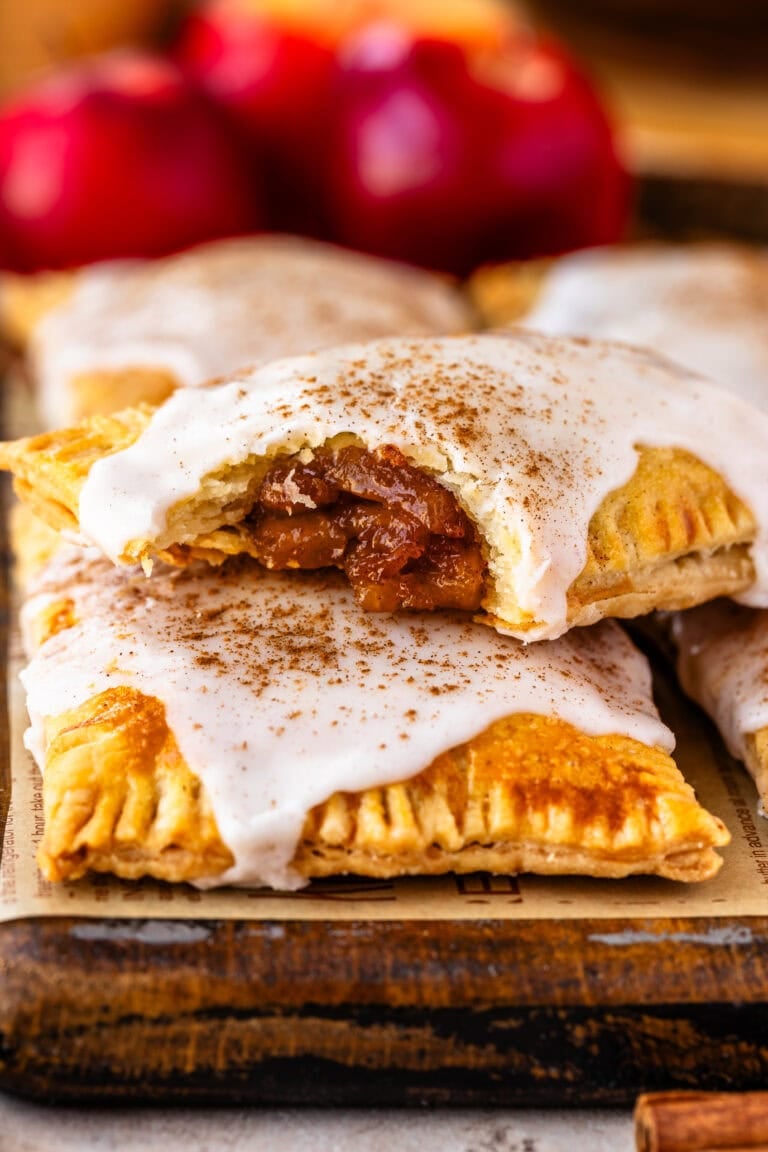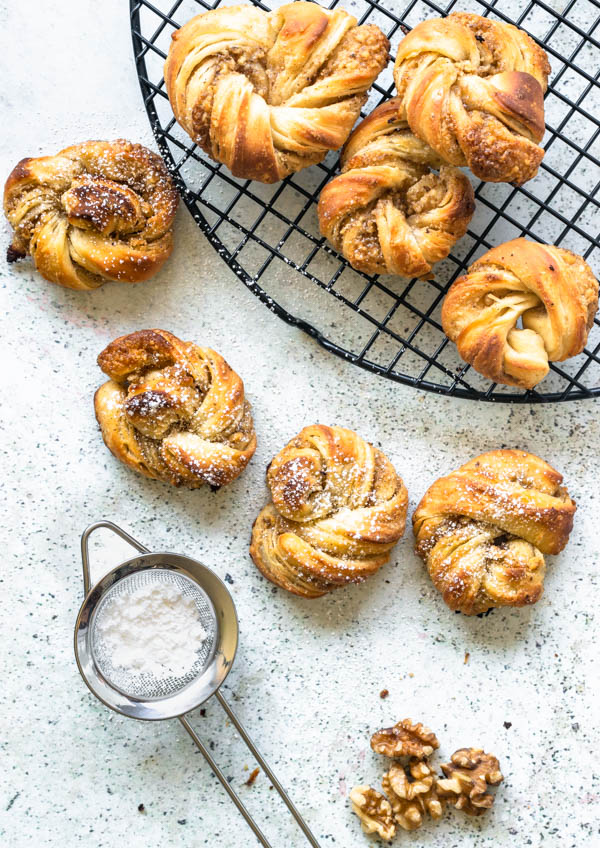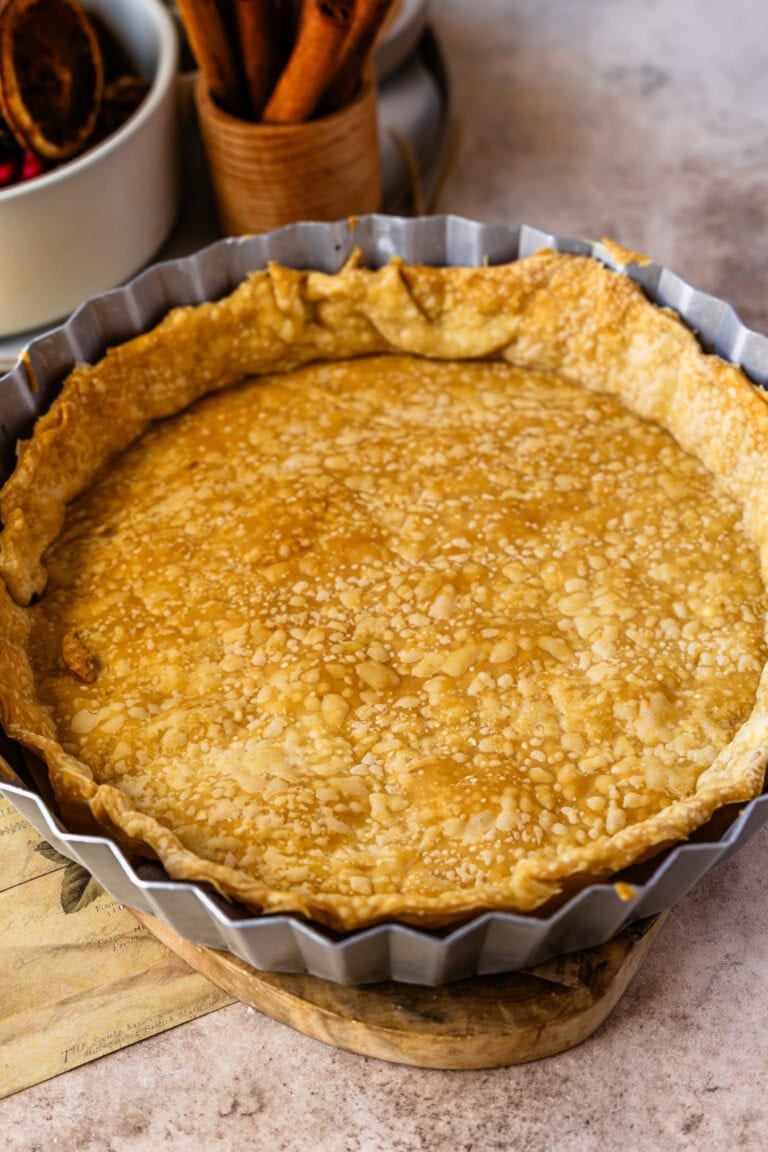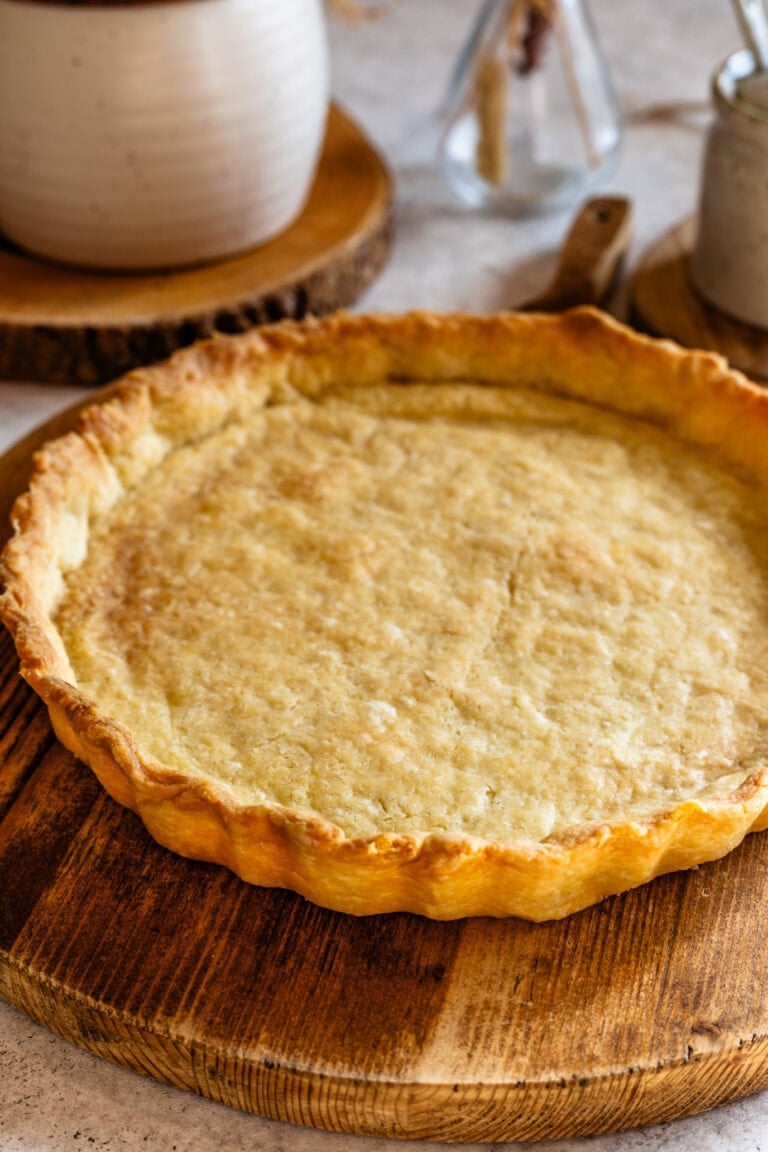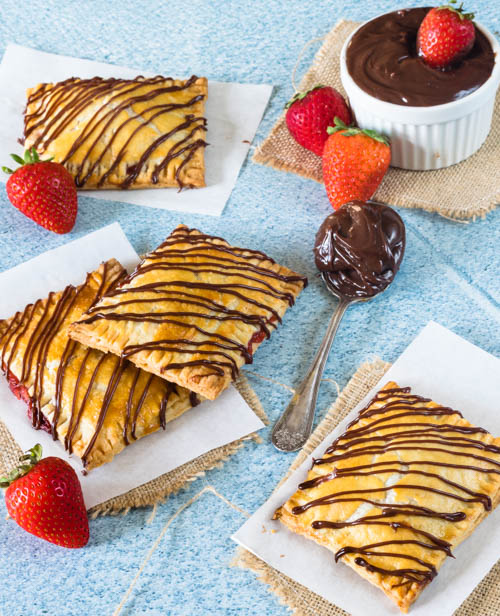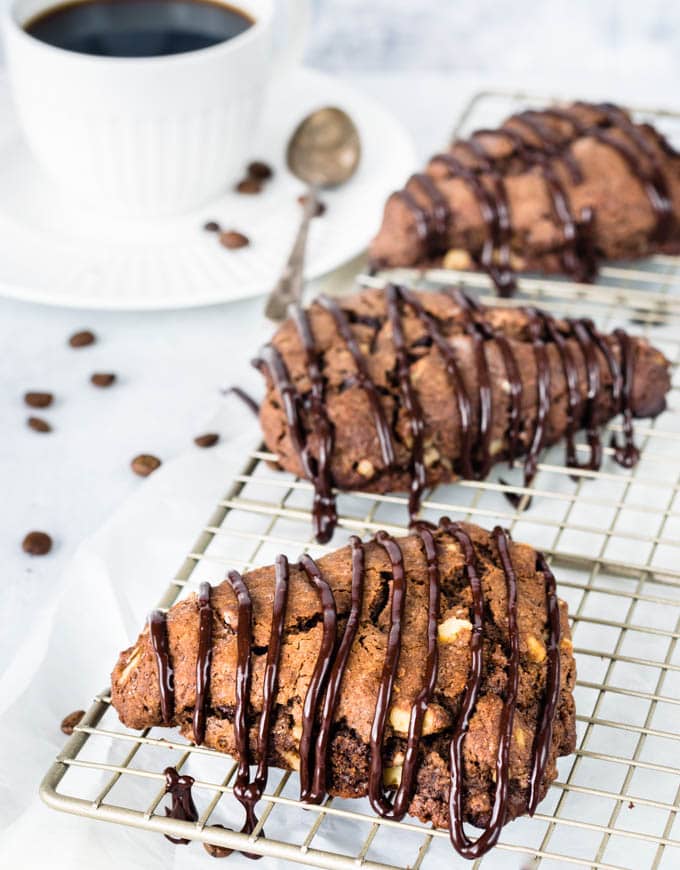Puff Pastry Mistakes and How to Avoid Them
Puff pastry is one of the most rewarding ingredients to bake with: buttery, golden, and endlessly versatile. But it can also be one of the trickiest—one wrong move, and you end up with soggy bottoms, flat layers, or greasy pastry. If you’ve ever pulled a dish or batch of puff pastry out of the oven and wondered “what went wrong?” — this guide is for you. Below you’ll find the most common puff pastry mistakes and how to avoid them, so you can achieve puff pastry perfection every time.
My Pastry Turned Out Greasy
When butter melts too early, it seeps out and leaves the pastry oily instead of crisp. A warm kitchen, hot work surface, or handling the dough too much with your fingertips can all cause this problem.
What works best is keeping everything cold: use cold butter straight from the fridge when making dough from scratch, work quickly, and let the pastry rest in the refrigerator if it softens. A handy trick is to bake on a chilled baking tray so the butter stays firm until the oven takes over.
This post may contain affiliate links. I earn a commission from qualified purchases. Please read our Privacy policy here.
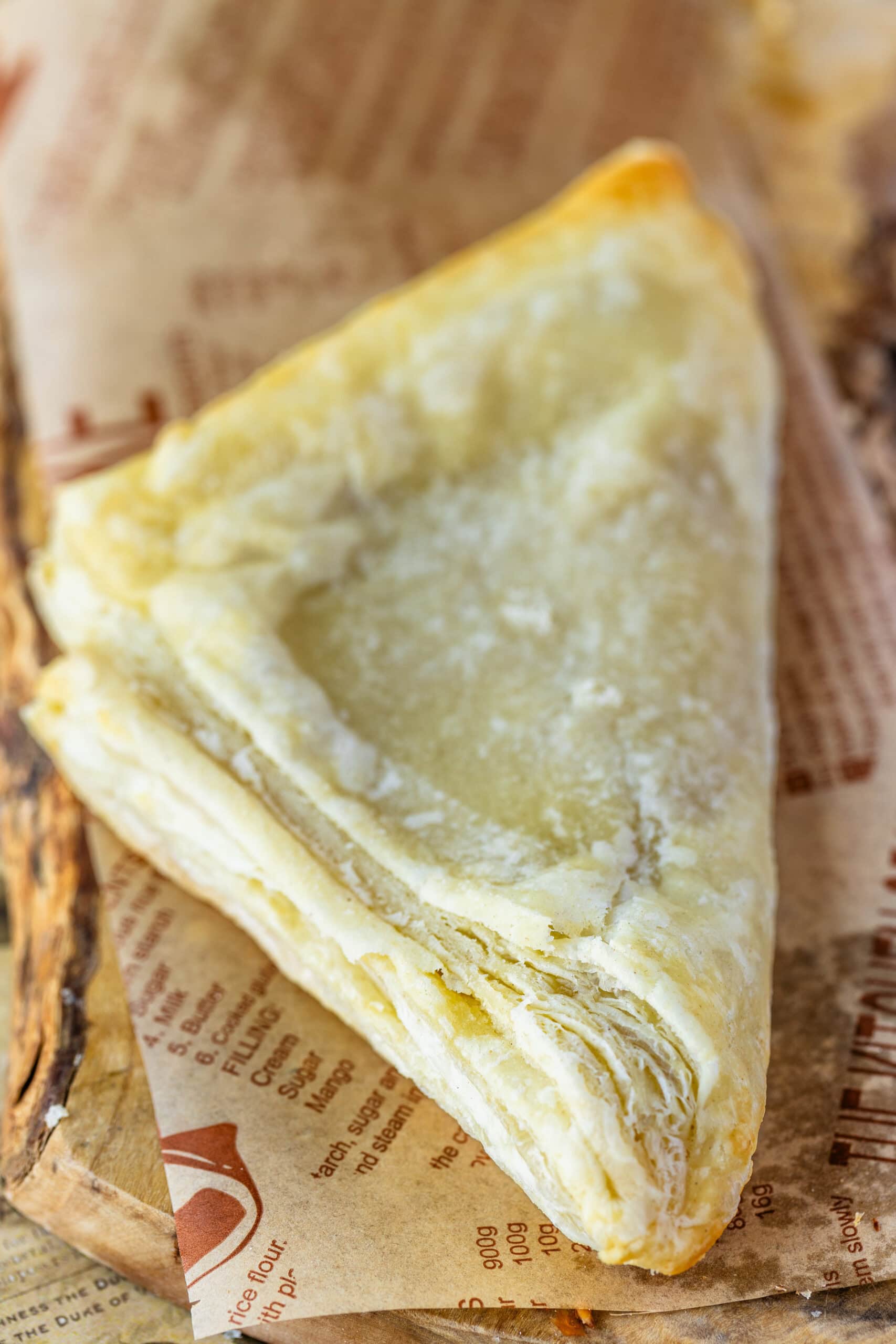
My Puff Pastry Didn’t Puff
Flat puff pastry often happens when the dough warms up too much at room temperature, when the thin layers of butter and dough are crushed from over-rolling, or when the oven isn’t hot enough. Without strong heat, the cold butter can’t create steam to lift the layered pastry.
To solve this, keep shaped pastries in the refrigerator or freezer before baking. Always cut with a sharp knife, pastry wheel, or cookie cutters to avoid sealing the edges of the dough shut. And make sure your oven is fully preheated to 400–425°F so the layers separate into tall, flaky pastry.
My Pastry Shrunk in the Oven
Shrinking happens when dough is stretched to fit a pan, rolled too thin, or not chilled before baking. Puff pastry will always try to snap back if forced into place.
To prevent this, roll gently on a lightly floured work surface and avoid stretching. If cracks appear, rest the dough under plastic wrap in the refrigerator before rolling again. Keeping the dough at ⅛ to ¼ inch thick helps hold its shape.
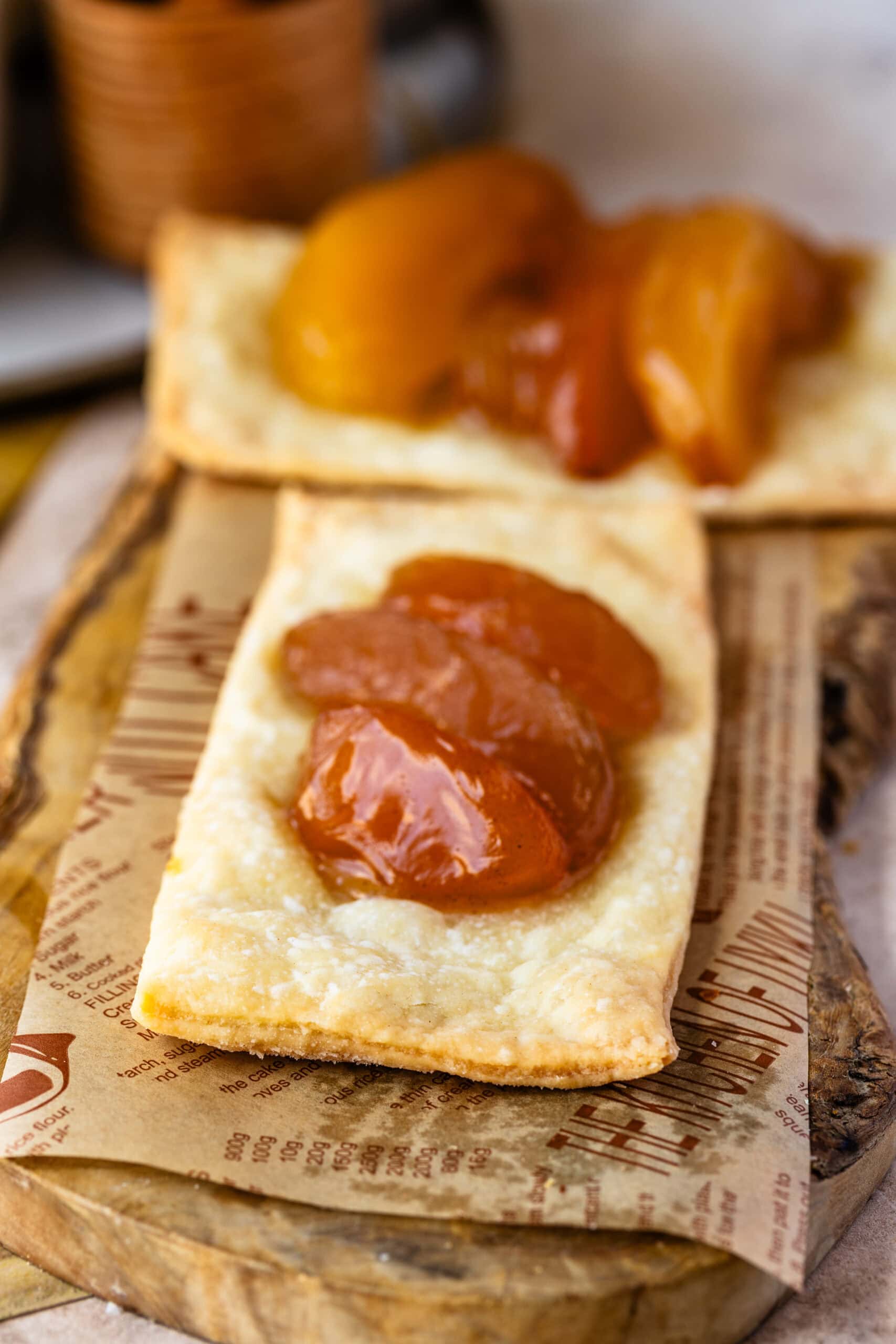
Uneven Browning
When puff pastry comes out patchy instead of evenly golden, it’s often due to uneven egg wash or hot spots in the oven. Without a proper coat, some areas stay pale while others brown too quickly.
The easiest way to fix this is brushing egg wash evenly across the pastry, taking care not to let it drip down the sides. Rotate trays halfway through baking, and double-check your oven with a thermometer to make sure the temperature is steady for flaky pastry perfection.
Layers Stuck Together
Instead of puffing into airy, layered pastry, sometimes the dough bakes dense and heavy. This usually happens when the sheets thaw too quickly at room temperature, clump together, or are rolled too firmly.
To avoid this, thaw store-bought puff pastry in the refrigerator according to package directions, never on the counter. Separate sheets carefully with a pastry cutter and roll lightly so the thin layers stay intact.
My Puff Pastry Is Tough, Not Flaky
When puff pastry loses its tender bite, it’s usually because too much plan flour was worked into the dough, or scraps were re-rolled too many times. Overmixing in a bowl or mixer when making it from scratch can also toughen the pastry.
The solution is to dust just enough flour on your work surface to prevent sticking. But not so much that it weighs down the dough. For the best flaky pastry, start fresh with a new sheet rather than recycling scraps too often.
Burnt Pastry
If your pastry burns before it’s fully baked, the oven may be too hot, the tray too close to the heat source, or the pieces too thin.
To fix this, bake at 400°F (or 425°F for very puffy items).keep an eye on smaller puff pastry pieces like palmiers, which brown quickly. Cover darker spots with foil if the centers still need time to finish.
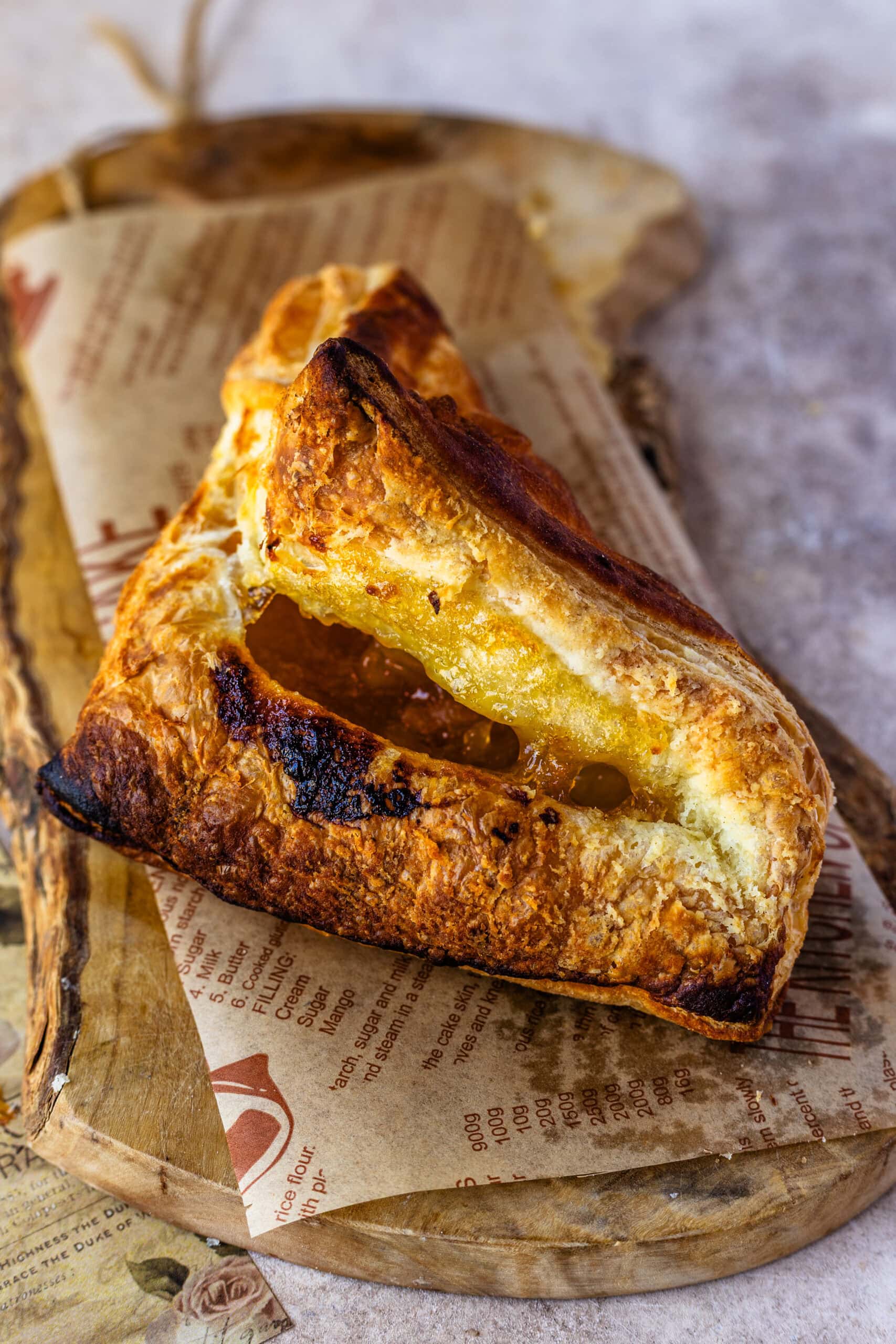
Undercooked Inside
Sometimes a batch of puff pastry looks gorgeous on the outside but is still doughy inside. This usually happens when the oven isn’t hot enough, the pastry is cut too thick, or there’s too much filling.
The best approach is to bake at high heat and check that your oven is accurate with a thermometer. Avoid overstuffing pastries. If the tops brown before the centers finish baking, cover with foil and keep going until they’re fully done.
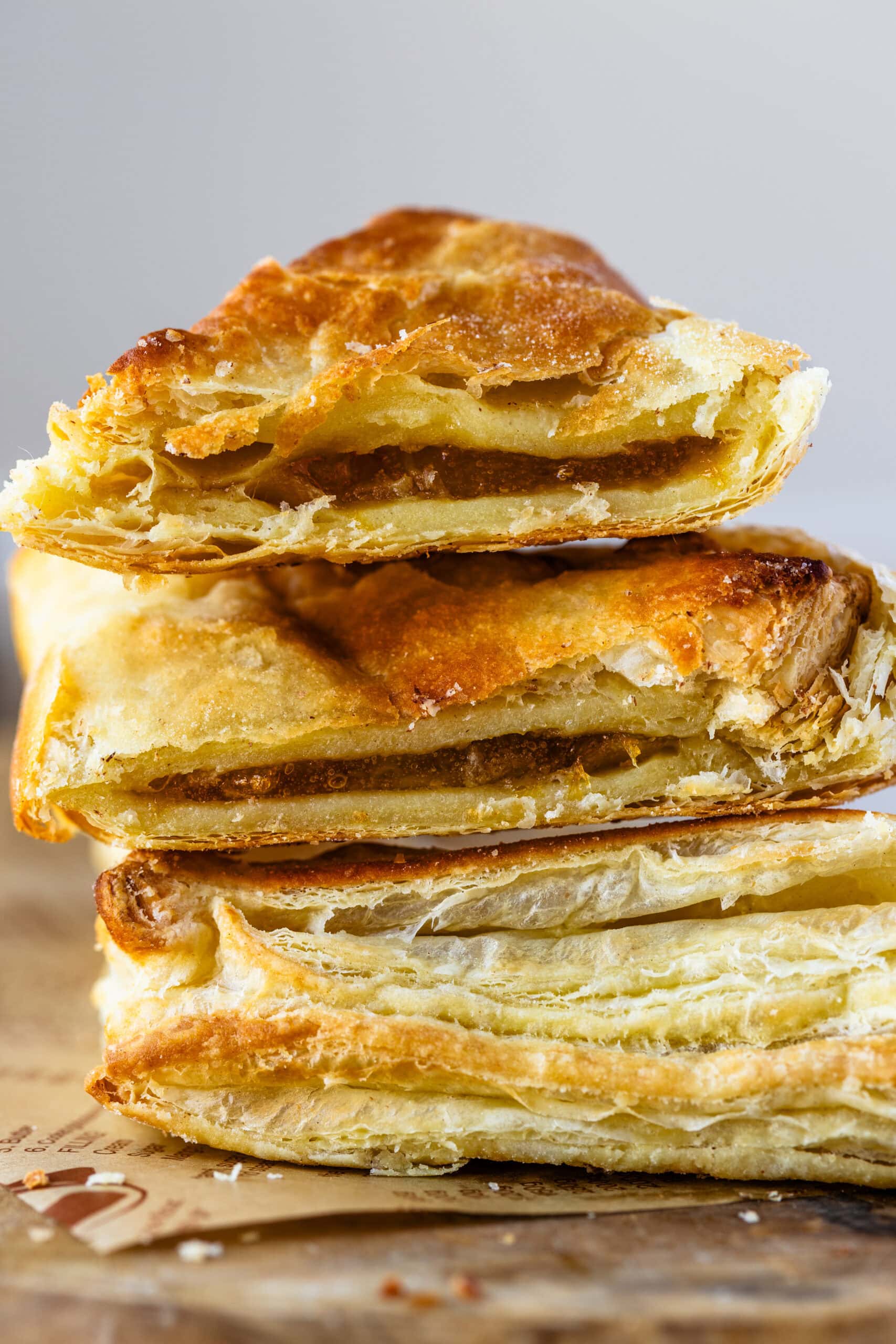
My Puff Pastry Has Soggy Bottoms
A common complaint with pies and tarts is that the bottoms never crisp, leaving a soggy mess instead of flaky pastry. Wet fillings, warm ingredients, or underbaking usually create too much moisture.
One solution is to blind-bake the base when making pies or tarts, especially if you’re using juicy fruits. Thicken fillings with a spoonful of flour or cornstarch—about 1 to 2 tsp is often enough. Always let fillings cool before adding them. Baking on a lower oven rack helps crisp the base against the baking tray.
Quick Fixes & Pro Tips
These puff pastry mistakes and how to avoid them will help you time and time again. The golden rules of puff pastry are simple: keep it cold, work gently, and bake hot. Always use cold butter and cold water when making pastry from scratch, and rest dough in the refrigerator before baking. Don’t stretch the edges of the dough, and avoid excess flour. Brush with egg wash for flavor and shine, and store leftovers in an airtight container to keep them fresh.
Puff pastry is a staple in any baker’s kitchen, thanks to its versatility—it works beautifully for sweet tarts, savory pies, or even a simple dish of cinnamon-sugar palmiers. Puff pastry mistakes are part of the process, but with these tips on puff pastry mistakes and how to avoid them, you’ll be pulling perfectly golden, flaky pastry out of the oven in no time.
And when you’re ready to try again, start with one of my favorite recipes: puff pastry dessert recipes for something sweet, cream cheese puff pastry for a creamy classic, or spinach puffs for a savory snack. If you’re feeling ambitious, make a batch of homemade puff pastry dough.
Puff Pastry Troubleshooting
Enjoy these two quick Puff Pastry Troubleshooting tables — a handy guide to fix common puff pastry problems at a glance. From greasy dough to soggy bottoms, you’ll find causes and solutions to help your bakes turn out perfectly crisp and flaky every time.
